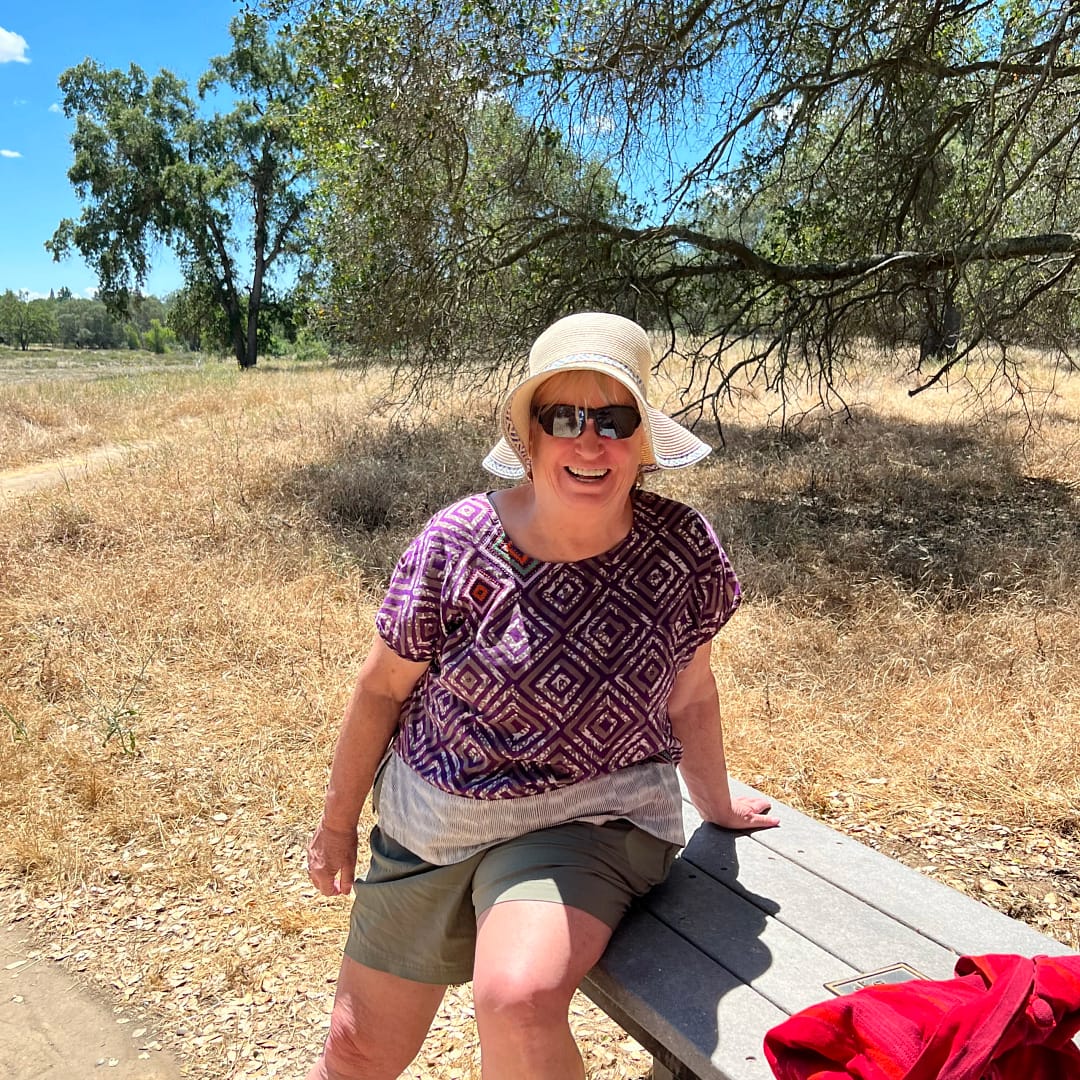
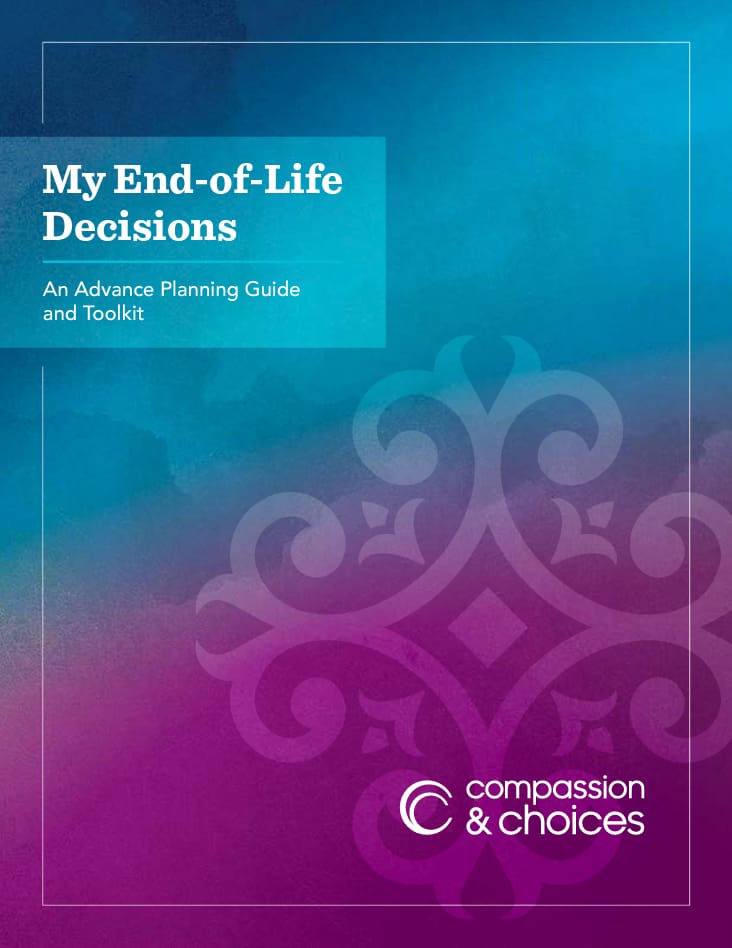
Compassion & Choices’ My End-of-Life Decisions: An Advance Planning Guide and Toolkit will help you work through your end-of-life priorities and empower you to have valuable discussions with your healthcare providers. It includes tear-out sheets for advance care planning. The 40-page toolkit is available for download or a free hard copy can be ordered. Some of the unique and important features of this toolkit are:
Compassion & Choices está comprometido en apoderar a las personas para que obtengan la atención y cuidados que desean durante una enfermedad grave o al final de su vida. Una forma de lograrlo es ayudando a las personas a planificarlo y convertirse en defensores de sí mismos y de sus seres queridos.

This interactive tool will document your wishes regarding the care you want and create an addendum that can be added to your existing advance directive.
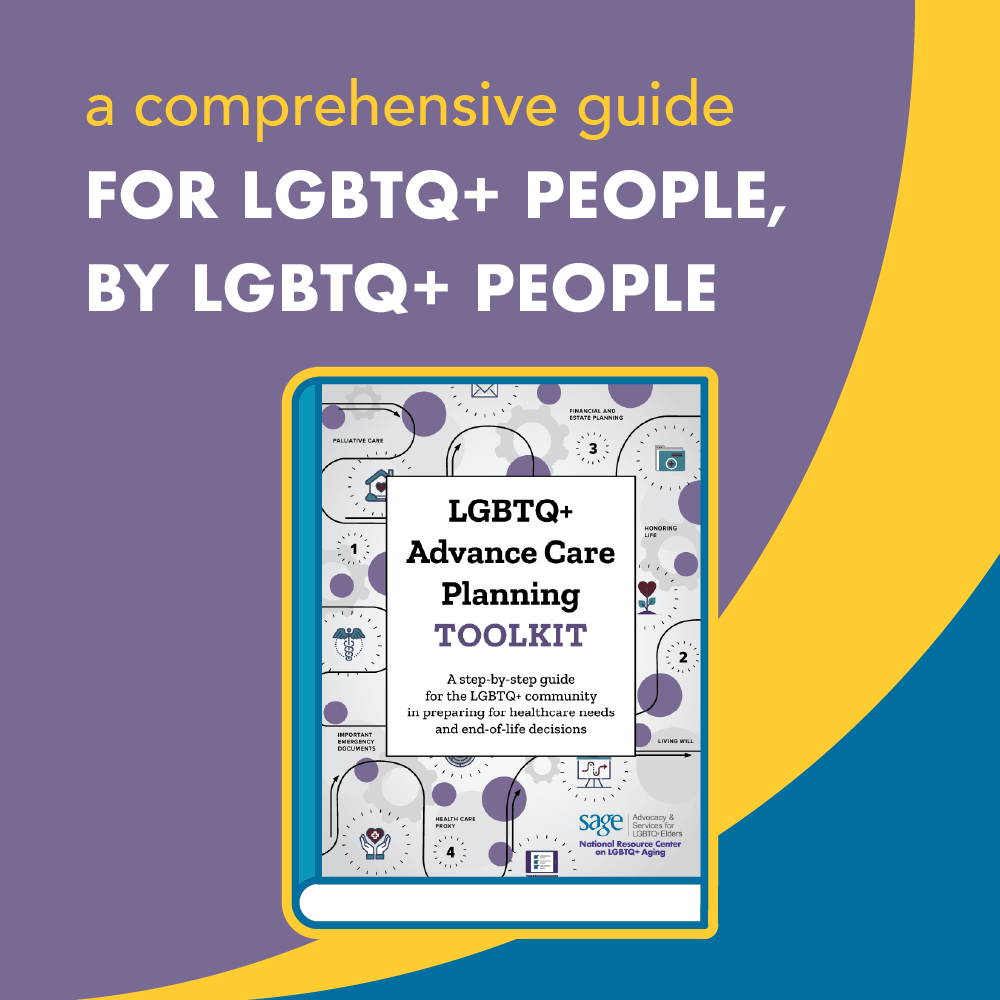
Compassion & Choices is proud to partner with SAGE to create a comprehensive end of life planning guide for LGBTQ+ people, by LGBTQ+ people. This tool walks through decisions around health care proxies, hospice care, how we honor life, and so much more. An excellent resource for individuals, chosen family members and professionals working in deathcare.
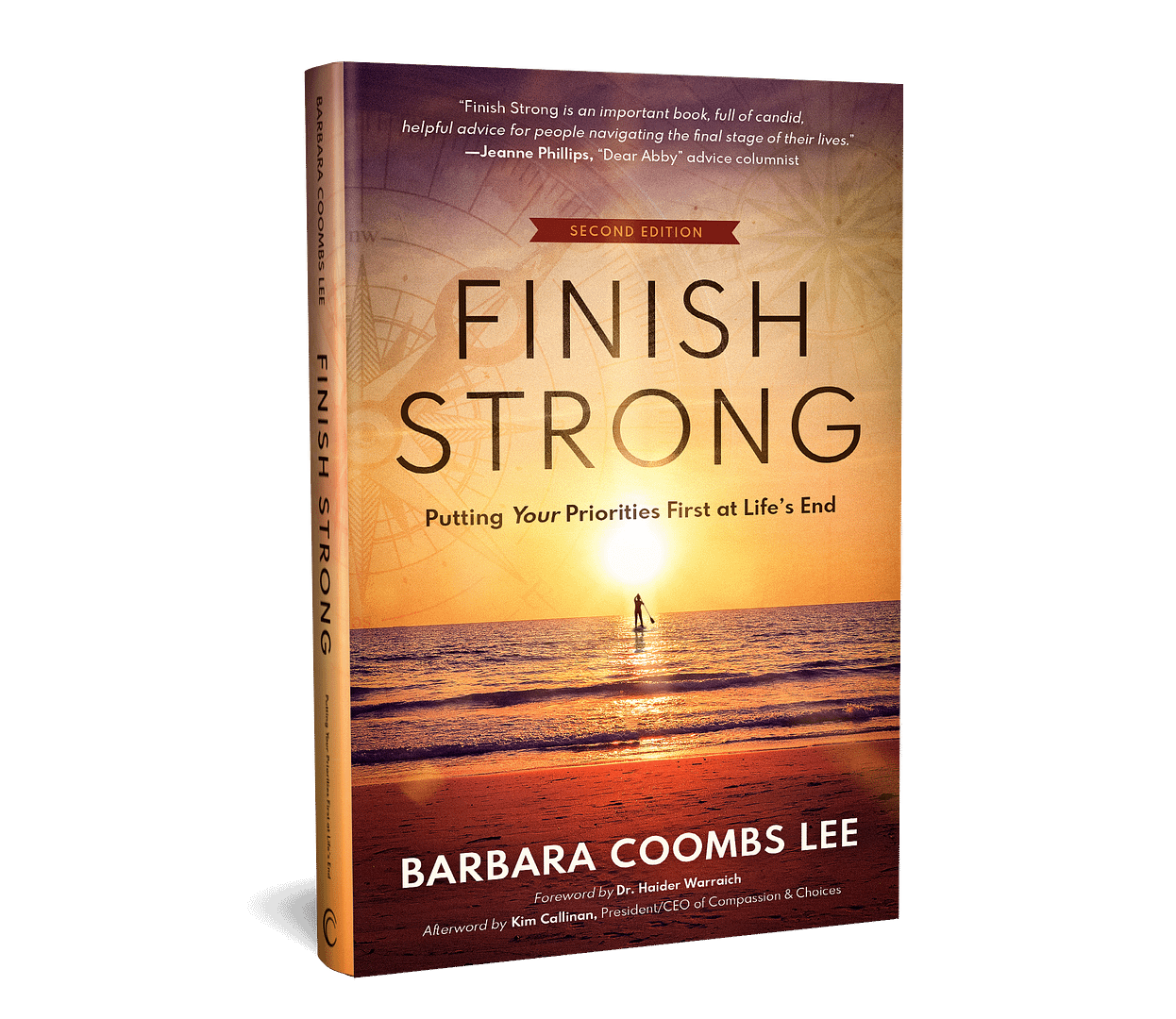
Finish Strong: Putting Your Priorities First at Life’s End, by President Emerita / Senior Adviser of Compassion & Choices Barbara Coombs Lee, is the guide to achieving the positive end-of-life experience you want and deserve. Finish Strong is for those who know they should prepare for the end of life, but are unsure how to think and talk about it. The book aims to help you live true to your values and priorities as vigor wanes, and how to make sure your wishes are honored. It describes concrete action to take in the here and now, to help live your best life to the end.
Studies show the single most powerful thing a person can do to improve the chance for gentle dying, is simply an courageously, talk about it with your clinicians. Our toolkit provides you with a step-by-step guide to finding clinicians who will support you in advance and during a serious diagnosis. This includes:

State-specific booklets that provide step-by-step instructions for how to use the law, how to find a physician and what to consider when talking with your physician. Also see the Medical Aid in Dying tracking sheet

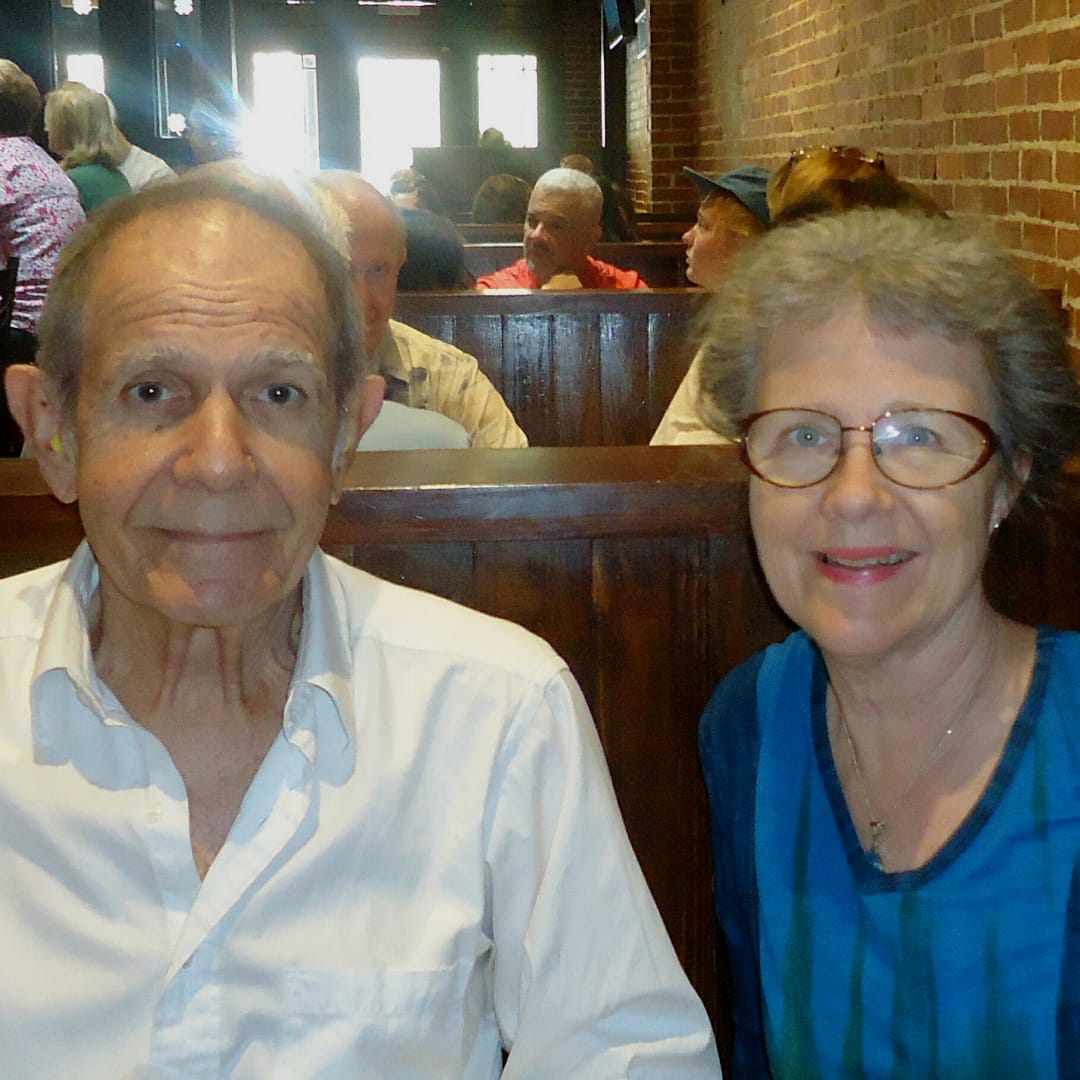
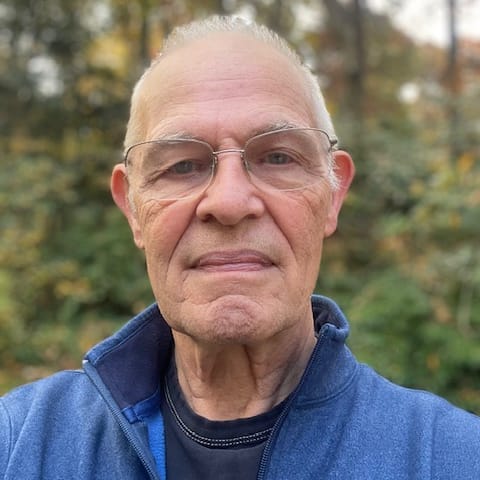


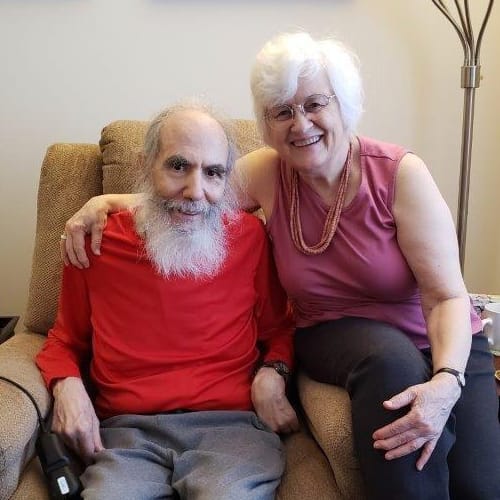


Mail contributions directly to:
Compassion & Choices Gift Processing Center
PO Box 485
Etna, NH 03750